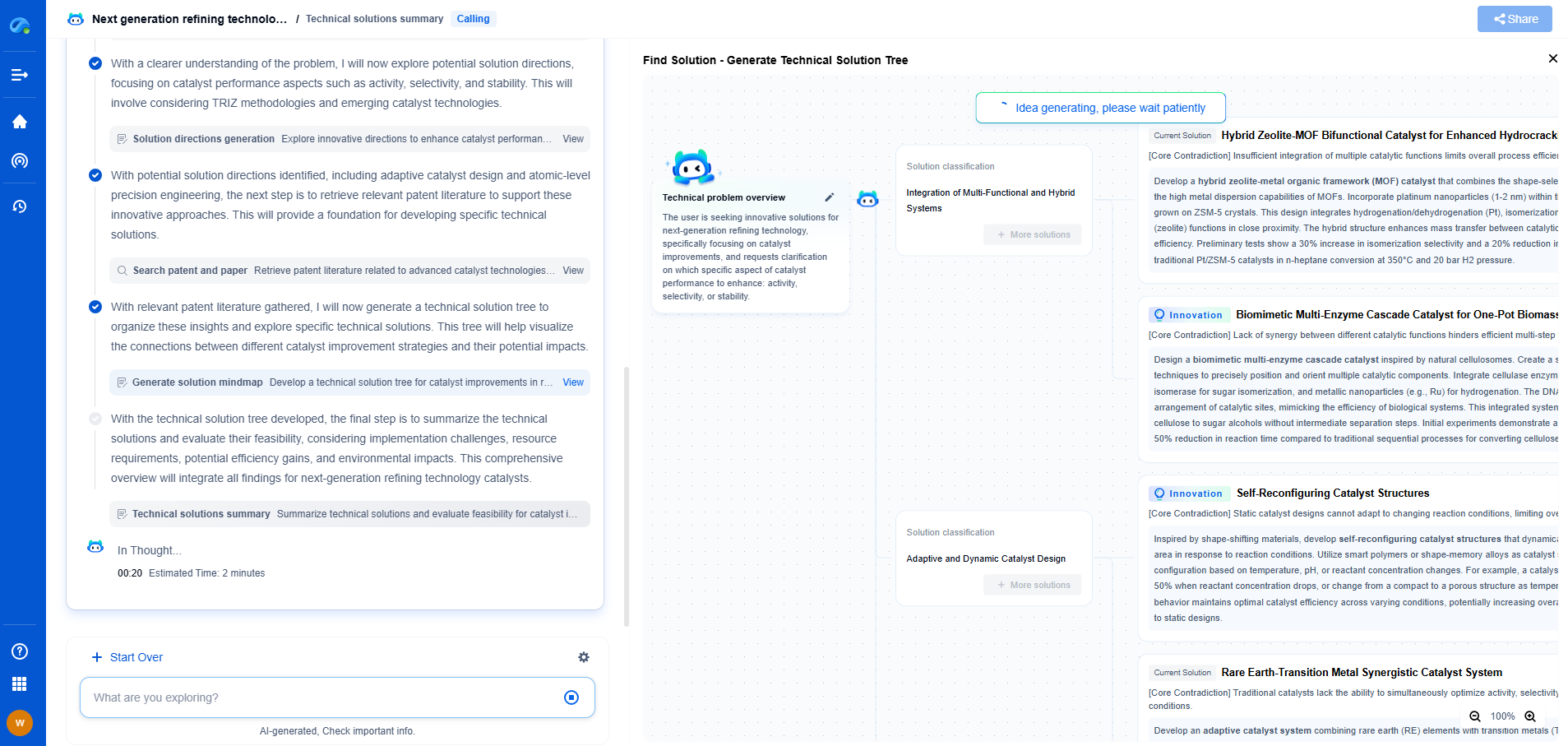CAN Bus Data Collision and How to Avoid It in High-Load Environments
JUL 17, 2025 |
The Controller Area Network (CAN) bus is a robust vehicle bus standard designed to allow microcontrollers and devices to communicate with each other's applications without a host computer. While incredibly reliable and efficient, especially in automotive and industrial environments, the CAN bus is not immune to issues such as data collision, particularly in high-load environments. Understanding the mechanics of CAN bus and how data collisions occur is crucial for engineers and technicians aiming to maintain seamless communication in their systems.
The Nature of Data Collision in CAN Bus
In a CAN bus network, messages are transmitted with a priority indicated by the identifier field. Lower identifier numbers hold higher priority. A collision occurs when two devices attempt to send a message simultaneously. The CAN protocol resolves this through a process called arbitration, where the node with the higher priority message continues to transmit, and the other node waits for the bus to be free. However, as network load increases, the chance of multiple nodes wanting to transmit simultaneously also increases, leading to delays, reduced efficiency, and potential data loss if not managed properly.
Factors Leading to High-Load Environments
Several factors can contribute to the high-load conditions on a CAN bus:
1. **Network Complexity**: An increase in the number of nodes or the amount of data each node sends can raise the bus load.
2. **Message Frequency**: Nodes that send messages at a high frequency can dominate the bus, causing delays for other nodes.
3. **Network Configuration**: Poorly configured networks with inadequate segment lengths or improper termination can exacerbate the problem.
4. **Error Frames**: Frequent errors leading to error frames can consume additional bandwidth, adding to network congestion.
Strategies to Avoid Data Collision
Optimizing CAN bus networks involves implementing strategies that can mitigate the risk of data collision, especially under high-load conditions. Here are some effective measures:
1. **Prioritize Essential Messages**: Ensure critical messages have the highest priority by assigning them lower identifier numbers. This guarantees they gain access to the bus first.
2. **Optimize Message Timing**: Adjust the frequency and timing of less critical messages to avoid congestion. Use timers and delays strategically to prevent simultaneous transmission attempts.
3. **Segment Networks**: For large systems, consider segmenting the network into smaller sub-networks using CAN gateways or routers. This reduces the load on each segment and minimizes the chance of collision.
4. **Use CAN FD**: Upgrade to CAN Flexible Data Rate (CAN FD) protocol, which increases data rate and payload size, reducing the time each message occupies the bus.
5. **Error Management**: Implement error detection and handling mechanisms to quickly resolve issues that could lead to further collisions or network load increments.
6. **Simulate and Test**: Use simulation tools to model network behavior under various loads and identify potential collision points. Testing allows for adjustments before deployment.
7. **Maintain Hardware**: Regular maintenance of cables, connectors, and CAN controllers helps prevent physical layer issues that could lead to collisions.
Conclusion
Data collisions on a CAN bus, especially in high-load environments, can significantly impact system performance and reliability. By understanding the factors that lead to these collisions and implementing proactive strategies, it is possible to maintain efficient and error-free communication. Prioritizing critical messages, optimizing network configuration, and regularly testing and maintaining the system are all vital steps in avoiding collisions and ensuring robust CAN bus performance.
Whether you’re developing multifunctional DAQ platforms, programmable calibration benches, or integrated sensor measurement suites, the ability to track emerging patents, understand competitor strategies, and uncover untapped technology spaces is critical.
Patsnap Eureka, our intelligent AI assistant built for R&D professionals in high-tech sectors, empowers you with real-time expert-level analysis, technology roadmap exploration, and strategic mapping of core patents—all within a seamless, user-friendly interface.
🧪 Let Eureka be your digital research assistant—streamlining your technical search across disciplines and giving you the clarity to lead confidently. Experience it today.
- R&D
- Intellectual Property
- Life Sciences
- Materials
- Tech Scout
- Unparalleled Data Quality
- Higher Quality Content
- 60% Fewer Hallucinations
Browse by: Latest US Patents, China's latest patents, Technical Efficacy Thesaurus, Application Domain, Technology Topic, Popular Technical Reports.
© 2025 PatSnap. All rights reserved.Legal|Privacy policy|Modern Slavery Act Transparency Statement|Sitemap|About US| Contact US: help@patsnap.com

